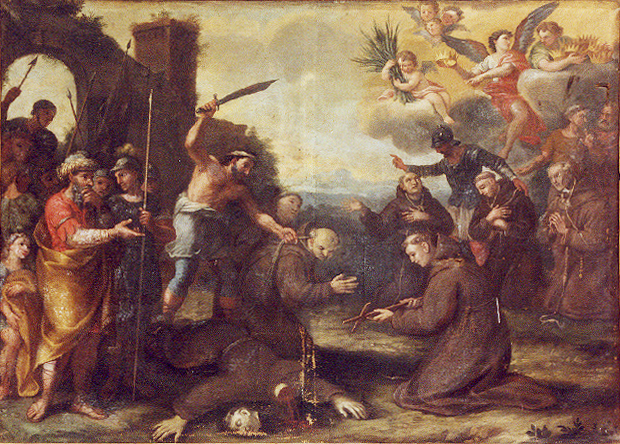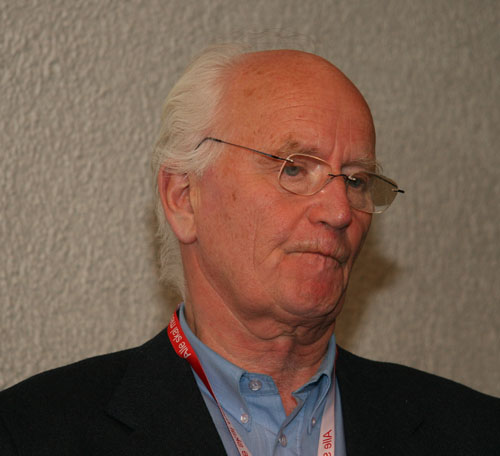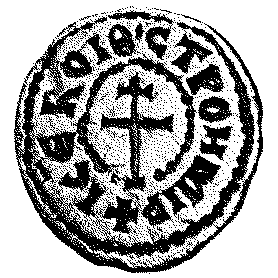|
Church Of The Transfiguration Of The Lord, Trpinja
The Church of the Transfiguration of the Lord ( hr, Hram Uznesenja Gospodnjeg, sr-Cyrl, Храм Вазнесења Господњег) in Trpinja is a Serbian Orthodox church in eastern Croatia. The first church on this site dates from 1753.Trpinja Eparhija Osjeckopoljska-Baranjska (in Croatian); accessed 2012-02-01 The first Orthodox Serbs moved into Trpinja in 1527. From 1573 the Serbian Orthodox community has been the majority population. The church is listed in Register of Cultural Goods of Croatia and last renovation was completed in 2011. [...More Info...] [...Related Items...] OR: [Wikipedia] [Google] [Baidu] |
Transfiguration Of The Lord
In the New Testament, the Transfiguration of Jesus is an event where Jesus is transfigured and becomes radiant in glory upon a mountain. The Synoptic Gospels (, , ) describe it, and the Second Epistle of Peter also refers to it (). In these accounts, Jesus and three of his apostles, Peter, James, and John, go to a mountain (later referred to as the Mount of Transfiguration) to pray. On the mountaintop, Jesus begins to shine with bright rays of light. Then the Old Testament figures Moses and Elijah appear next to him and he speaks with them. Both figures had eschatological roles: they symbolize the Law and the prophets, respectively. Jesus is then called " Son" by the voice of God the Father, as in the Baptism of Jesus. Many Christian traditions, including the Eastern Orthodox, Catholic Church, Lutheran and Anglican churches, commemorate the event in the Feast of the Transfiguration, a major festival. In Greek Orthodoxy, the event is called the ''metamorphosis''. Signific ... [...More Info...] [...Related Items...] OR: [Wikipedia] [Google] [Baidu] |
World War II In Yugoslavia
World War II in the Kingdom of Yugoslavia began on 6 April 1941, when the country was swiftly conquered by Axis forces and partitioned between Germany, Italy, Hungary, Bulgaria and their client regimes. Shortly after Germany attacked the USSR on 22 June 1941, the communist-led republican Yugoslav Partisans, on orders from Moscow, launched a guerrilla liberation war fighting against the Axis forces and their locally established puppet regimes, including the Axis-allied Independent State of Croatia (NDH) and the Government of National Salvation in the German-occupied territory of Serbia. This was dubbed the National Liberation War and Socialist Revolution in post-war Yugoslav communist historiography. Simultaneously, a multi-side civil war was waged between the Yugoslav communist Partisans, the Serbian royalist Chetniks, the Axis-allied Croatian Ustaše and Home Guard, Serbian Volunteer Corps and State Guard, Slovene Home Guard, as well as Nazi-allied Russian Protecti ... [...More Info...] [...Related Items...] OR: [Wikipedia] [Google] [Baidu] |
18th-century Serbian Orthodox Church Buildings
The 18th century lasted from January 1, 1701 ( MDCCI) to December 31, 1800 ( MDCCC). During the 18th century, elements of Enlightenment thinking culminated in the American, French, and Haitian Revolutions. During the century, slave trading and human trafficking expanded across the shores of the Atlantic, while declining in Russia, China, and Korea. Revolutions began to challenge the legitimacy of monarchical and aristocratic power structures, including the structures and beliefs that supported slavery. The Industrial Revolution began during mid-century, leading to radical changes in human society and the environment. Western historians have occasionally defined the 18th century otherwise for the purposes of their work. For example, the "short" 18th century may be defined as 1715–1789, denoting the period of time between the death of Louis XIV of France and the start of the French Revolution, with an emphasis on directly interconnected events. To historians who expand ... [...More Info...] [...Related Items...] OR: [Wikipedia] [Google] [Baidu] |
Churches Completed In 1753
Church may refer to: Religion * Church (building), a building for Christian religious activities * Church (congregation), a local congregation of a Christian denomination * Church service, a formalized period of Christian communal worship * Christian denomination, a Christian organization with distinct doctrine and practice * Christian Church, either the collective body of all Christian believers, or early Christianity Places United Kingdom * Church (Liverpool ward), a Liverpool City Council ward * Church (Reading ward), a Reading Borough Council ward * Church (Sefton ward), a Metropolitan Borough of Sefton ward * Church, Lancashire, England United States * Church, Iowa, an unincorporated community * Church Lake, a lake in Minnesota Arts, entertainment, and media * ''Church magazine'', a pastoral theology magazine published by the National Pastoral Life Center Fictional entities * Church (''Red vs. Blue''), a fictional character in the video web series ''Red vs. Blue'' * Ch ... [...More Info...] [...Related Items...] OR: [Wikipedia] [Google] [Baidu] |
List Of Serbian Orthodox Churches In Croatia
Territory of modern-day Croatia is divided between 7 eparchies of the Serbian Orthodox Church. 5 of them have their seat in Croatia, one in Serbia and one in Bosnia and Herzegovina. As of March 2021 the central public ''Records of Religious Communities in the Republic of Croatia'' listed 431 "''organizational units''" of the Serbian Orthodox Church in Croatia, many of which are local parishes with their own churches. Protection of the properties of cultural importance is among other general provisions defined by the Agreement between the Republic of Croatia and the Serbian Orthodox Church in the Republic of Croatia. This is a list of churches categorized according to eparchy; List per Eparchy Metropolitanate of Zagreb and Ljubljana Metropolitanate of Zagreb and Ljubljana is one of the three Metropolitanates of the Serbian Orthodox Church. Its seat is located in Zagreb. * Serbian Orthodox Cathedral, Zagreb (Metropolitanate's cathedral) * Church of St. George, Grubišno Polje ... [...More Info...] [...Related Items...] OR: [Wikipedia] [Google] [Baidu] |
Serbs Of Croatia
The Serbs of Croatia ( sh-Cyrl-Latn, separator=" / ", Срби у Хрватској, Srbi u Hrvatskoj) or Croatian Serbs ( sh-Cyrl-Latn, separator=" / ", хрватски Срби, hrvatski Srbi) constitute the largest national minority in Croatia. The community is predominantly Eastern Orthodox Christian by religion, as opposed to the Croats who are Roman Catholic. In some regions of modern-day Croatia, mainly in southern Dalmatia, ethnic Serbs have been present from the Early Middle Ages. Serbs from modern-day Serbia and Bosnia-Herzegovina started actively migrating to Croatia in several migration waves after 1538 when the Emperor Ferdinand I granted them the right to settle on the territory of the Military Frontier. In exchange for land and exemption from taxation, they had to conduct military service and participate in the protection of the Habsburg monarchy's border against the Ottoman Empire. They populated the Dalmatian Hinterland, Lika, Kordun, Banovina, Slavoni ... [...More Info...] [...Related Items...] OR: [Wikipedia] [Google] [Baidu] |
Forced Conversion
Forced conversion is the adoption of a different religion or the adoption of irreligion under duress. Someone who has been forced to convert to a different religion or irreligion may continue, covertly, to adhere to the beliefs and practices which were originally held, while outwardly behaving as a convert. Crypto-Jews, crypto-Christians, crypto-Muslims and crypto-Pagans are historical examples of the latter. Religion and power In general, anthropologists have shown that the relationship between religion and politics is complex, especially when viewed over the expanse of human history.Firth, Raymond (1981Spiritual Aroma: Religion and Politics ''American Anthropologist'', New Series, Vol. 83, No. 3, pp. 582–601 While religious leaders and the state generally have different aims, both are concerned with power and order; both use reason and emotion to motivate behavior. Throughout history, leaders of religious and political institutions have cooperated, opposed one another, an ... [...More Info...] [...Related Items...] OR: [Wikipedia] [Google] [Baidu] |
Roman Catholic Archdiocese Of Đakovo-Osijek
The Roman Catholic Archdiocese of Đakovo-Osijek ( hr, Đakovačko-osječka nadbiskupija; la, Archidioecesis Diacovensis-Osijekensis) is an archdiocese of the Latin Church of the Roman Catholic Church in Croatia."Archdiocese of Ðakovo-Osijek" '' Catholic-Hierarchy.org''. David M. Cheney. Retrieved February 29, 2016"Metropolitan Archdiocese of Đakovo–Osijek" ''GCatholic.org''. Gabriel Chow. Retrieved February 29, 2016 The archdiocese is centred on the city of Đakovo, in Croatia. |
Roman Catholic
Roman or Romans most often refers to: *Rome, the capital city of Italy *Ancient Rome, Roman civilization from 8th century BC to 5th century AD *Roman people, the people of ancient Rome *''Epistle to the Romans'', shortened to ''Romans'', a letter in the New Testament of the Christian Bible Roman or Romans may also refer to: Arts and entertainment Music *Romans (band), a Japanese pop group * ''Roman'' (album), by Sound Horizon, 2006 * ''Roman'' (EP), by Teen Top, 2011 *"Roman (My Dear Boy)", a 2004 single by Morning Musume Film and television *Film Roman, an American animation studio * ''Roman'' (film), a 2006 American suspense-horror film * ''Romans'' (2013 film), an Indian Malayalam comedy film * ''Romans'' (2017 film), a British drama film * ''The Romans'' (''Doctor Who''), a serial in British TV series People * Roman (given name), a given name, including a list of people and fictional characters * Roman (surname), including a list of people named Roman or Romans *Ῥωμα� ... [...More Info...] [...Related Items...] OR: [Wikipedia] [Google] [Baidu] |
Genocide Of Serbs In The Independent State Of Croatia
The Genocide of Serbs in the Independent State of Croatia ( sh-Latn-Cyrl, Genocid nad Srbima u Nezavisnoj Državi Hrvatskoj, separator=" / ", Геноцид над Србима у Независној Држави Хрватској) was the systematic persecution of Serbs which was committed during World War II by the fascist Ustaše regime in the Nazi German puppet state known as the Independent State of Croatia ( sh, Nezavisna Država Hrvatska, separator=" / ", Независна Држава Хрватска, NDH) between 1941 and 1945. It was carried out through executions in death camps, as well as through mass murder, ethnic cleansing, deportations, forced conversions, and war rape. This genocide was simultaneously carried out with the Holocaust in the NDH as well as the genocide of Roma, by combining Nazi racial policies with the ultimate goal of creating an ethnically pure Greater Croatia. The ideological foundation of the Ustaše movement reaches back to the 19th ... [...More Info...] [...Related Items...] OR: [Wikipedia] [Google] [Baidu] |
Joint Council Of Municipalities
sr, Заједничко веће општина , logo = Joint Council of Municipalities Logo.png , size = 150px , alt = , caption = Flag of The Joint Council of Municipalities , map = Joint Council of Municipalities in Croatia and Europe.jpg , msize = , malt = , mcaption = Member municipalities in dark green , abbreviation = ZVO , formation = 1997 (due to Erdut Agreement from 1995) , founding_location = Vukovar , extinction = , affiliations = Serb National Council , status = sui generis body formed on the basis of international agreement , purpose = protection of interests of and rights of Serbs in Eastern Croatia , headquarters = VukovarStatut Zajedničkog vijeća općina, Vukovar, 2001. (''regional office in Beli Manastir''), Croatia , location = , coords ... [...More Info...] [...Related Items...] OR: [Wikipedia] [Google] [Baidu] |
Serbian Orthodox
The Serbian Orthodox Church ( sr-Cyrl, Српска православна црква, Srpska pravoslavna crkva) is one of the autocephalous (ecclesiastically independent) Eastern Orthodox Christian churches. The majority of the population in Serbia, Montenegro and the Republika Srpska entity of Bosnia and Herzegovina are members of the Serbian Orthodox Church. It is organized into metropolitanates and eparchies, located primarily in Serbia, Bosnia and Herzegovina, Montenegro, and Croatia. Other congregations are located in the Serb diaspora. The Serbian Patriarch serves as first among equals in his church. The current patriarch is Porfirije, enthroned on 19 February 2021. The Church achieved autocephalous status in 1219, under the leadership of Saint Sava, becoming the independent Archbishopric of Žiča. Its status was elevated to that of a patriarchate in 1346, and was known afterwards as the Serbian Patriarchate of Peć. This patriarchate was abolished by the Ottoman ... [...More Info...] [...Related Items...] OR: [Wikipedia] [Google] [Baidu] |




.jpg)

